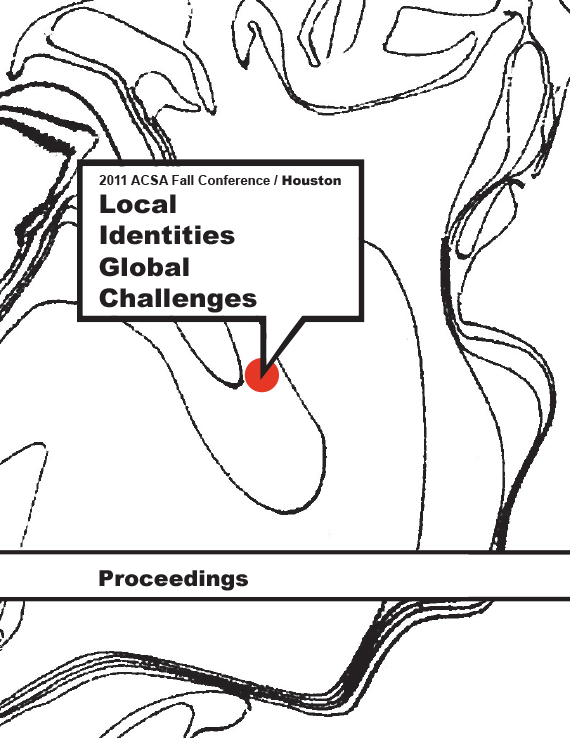Author(s): Susan Rogers
Infrastructure is the skeleton of the city, it frames development and dominates the landscape. In Houston, 575 miles of freeways (twice the lane miles of Los Angeles and 55% of the planned 1,000 mile system) spread out in 14 different directions connected with three loop roads with a fourth forthcoming. Appended to the freeway system are 100 miles of high occupancy vehicle (HOV) lanes and 28 supporting park and ride lots that are 50% occupied 50% of the time. 19 Transit Centers serve mostly those without access to an automobile, and provide no infrastructure on site with the exception of a roof protecting riders from the elements. 2500 miles of bayous and waterways, including the Ship Channel, wind through the city, draining it during frequent downpours, and providing the only sectional relief outside of freeway interchanges. This paper explores the idea of THICK INFRASTRUCTURE, defined here as the expansion of public works projects to include elements that enhance civic and public spaces or the adaptation of existing, single-purpose infrastructural landscapes into more robust, multi-functional systems. This is a new conception of what infrastructure can be, and how decision-making processes can be transformed to merge public investments with the goal of enriching our diverse communities. The project advances the vision of infrastructure as multi-functional, designed, and integrated into the fabric of the city, replacing the reality of single-purpose, engineered, and disconnected infrastructural landscapes. Specifically, THICK INFRASTRUCTURE explores at multiple scales two related, but distinct questions, first, how can existing infrastructure be adapted for additional programs and functions, for example using utility right-of-ways for linear parks or the cultivation of switch-grass as a source for bio-fuel? And second, how can public works projects be “thickened” to include public and civic amenities, for example capitalizing on opportunities related to street widening to carve out small public plazas or green spaces? The project has generated design ideas that represent a full spectrum of both costs and timelines—from project budgets of $10,000 to $10,000,000, from projects that can be implemented tomorrow to long-term projects that would take a decade. THICK INFRASTRUCTURE re-thinks and intervenes in the existing infrastructural landscape of the city to create a platform for new and creative thinking on infrastructure systems from an applied and local perspective (at a time when investment in infrastructure is a pressing issue), and to influence future public works investments by presenting a catalogue of creative and viable design ideas. While Houston is the laboratory, localizing the project and providing specific conditions for exploration, the design ideas have broader application in a diversity of places across the globe.
Volume Editors
Ikhlas Sabouni & Jorge Vanegas

 Study Architecture
Study Architecture  ProPEL
ProPEL 
